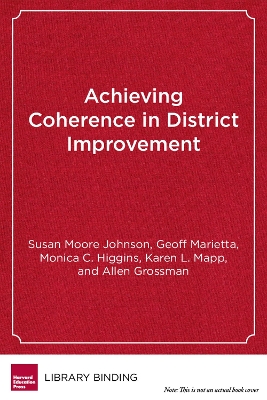Achieving Coherence in District Improvement focuses on a problem of practice faced by educational leaders across the nation: how to effectively manage the relationship between the central office and schools. The book is based on a study of five large urban districts that have demonstrated improvement in student achievement. The authors-all members of Harvard University's Public Education Leadership Project (PELP)-argue that there is no "one best way" to structure the central offi ce-school relationship. Instead, they say, what matters is whether district leaders eff ectively select and implement their strategy by achieving coherence among key elementsand actors-the district's environment, resources, systems, structures, stakeholders, and culture.
The authors examine the fi ve districts' approaches in detail and point to a number of important findings. First, they emphasize that a clear, shared understanding of decision rights in key areas-academic programming, budgeting, and staffing-is essential to developing an eff ective central office-school relationship. Second, they stress the importance of building mutually supportive and trusting relationships between district leaders and principals. Third, they highlight the ways that culture and the external environment infl uence the relationship between the central office and schools. Each chapter also provides relevant "Lessons for Practice"-actionable takeaways-that educational leaders from any district can use to improve the central office-school relationship.
- ISBN13 9781612508122
- Publish Date 1 June 2014
- Publish Status Out of Print
- Out of Print 23 December 2021
- Publish Country US
- Imprint Harvard Educational Publishing Group
- Format Hardcover
- Pages 256
- Language English
